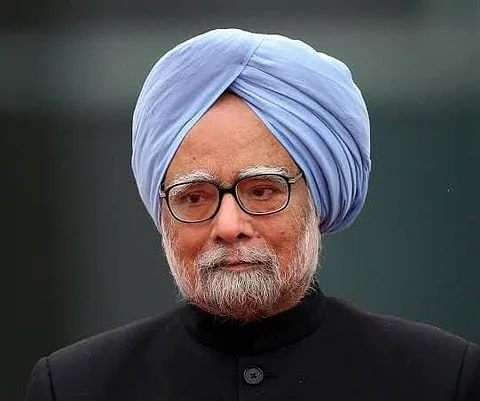

Manmohan Singh, the 13th Prime Minister of the Republic of India, who also heralded economic reforms in India during his stint as finance minister, passed away on December 26, 2024.
Singh, who was 92, had been brought to the All India Institute of Medical Sciences (AIIMS) at 8:06 PM following a sudden loss of consciousness at his residence. The hospital confirmed the former prime minister's demise at 9:51 PM in an official press statement.
Singh was born in 1932 in the village of Gah that is today part of Chakwal district in Pakistan’s Punjab province.
His family emigrated to Amritsar after the Partition of the subcontinent in 1947. He received a Bachelor’s and Master’s degree from Panjab University in 1952 and 1954.
He went on to study at ‘Oxbridge’, receiving a BA from Cambridge University in 1957 and a D Phil from Oxford University in the United Kingdom in 1962.
His doctoral thesis at Oxford was titled India’s export performance, 1951–1960, export prospects and policy implications.
Singh’s career after his studies was studded with stints at the topmost economic institutions, both in India and abroad.
He was a senior lecturer, reader and later professor of economics at Panjab University from 1957 to 1965. Later, he also taught at the Delhi School of Economics, University of Delhi.
He also worked at the United Nations Conference on Trade and Development (UNCTAD), the Planning Commission of India and the Reserve Bank of India.
Singh also served as advisor to the Union ministries of foreign trade and finance.
Manmohan Singh was appointed as the finance minister of India in June 1991 by then-Prime Minister Narasimha Rao.
India, at that time, was in a grave situation. Its fiscal deficit was close to 8.5 per cent of the gross domestic product.
The balance of payments deficit was huge. India was thus seeing more money leave its borders than enter them. The country’s forex reserves amounted to just a billion dollars.
India requested the International Monetary Fund for funds, which demanded that the country dismantle its infamous ‘License Raj’ and open up its economy.
Many in the ruling Indian National Congress were firmly opposed to such a move. However, Singh, with Rao’s support was able to dismantle the socialist structure of India’s economy and open it up for privatisation.
On July 24, 2021, Manmohan Singh released a statement on the 30th anniversary of the ushering in of economic reforms.
He noted that while it gave him “immense joy” to look back at the positive impact of economic reforms, he was “deeply saddened” by the loss of lives in the novel coronavirus disease (COVID-19) pandemic.
The time now was not one to exult and rejoice but to introspect and ponder, he said. The road ahead was going to be even more daunting than the 1991 crisis.
India’s priorities as a nation needed to be recalibrated to foremost ensure a healthy and dignified life for every single Indian, he said.
The Congress-led United Progressive Alliance declared Manmohan Singh as its candidate for Prime Minister. He was administered oath of office May 22, 2004.
During his first term, the Indian economy grew at 8-9 per cent. India became the second-fastest growing major economy in 2007.
But even more important was the passage of several important legislations during Singh’s first tenure as prime minister.
Parliament passed the Mahatma Gandhi National Rural Employment Guarantee Act as well as the Right to Information Act in 2005.
Singh's government also started the National Rural Health Mission in 2005.
Important legislation passed during his second tenure included the Right to Fair Compensation and Transparency in Land Acquisition, Rehabilitation and Resettlement Act, 2013 and the Right of Children to Free and Compulsory Education Act.